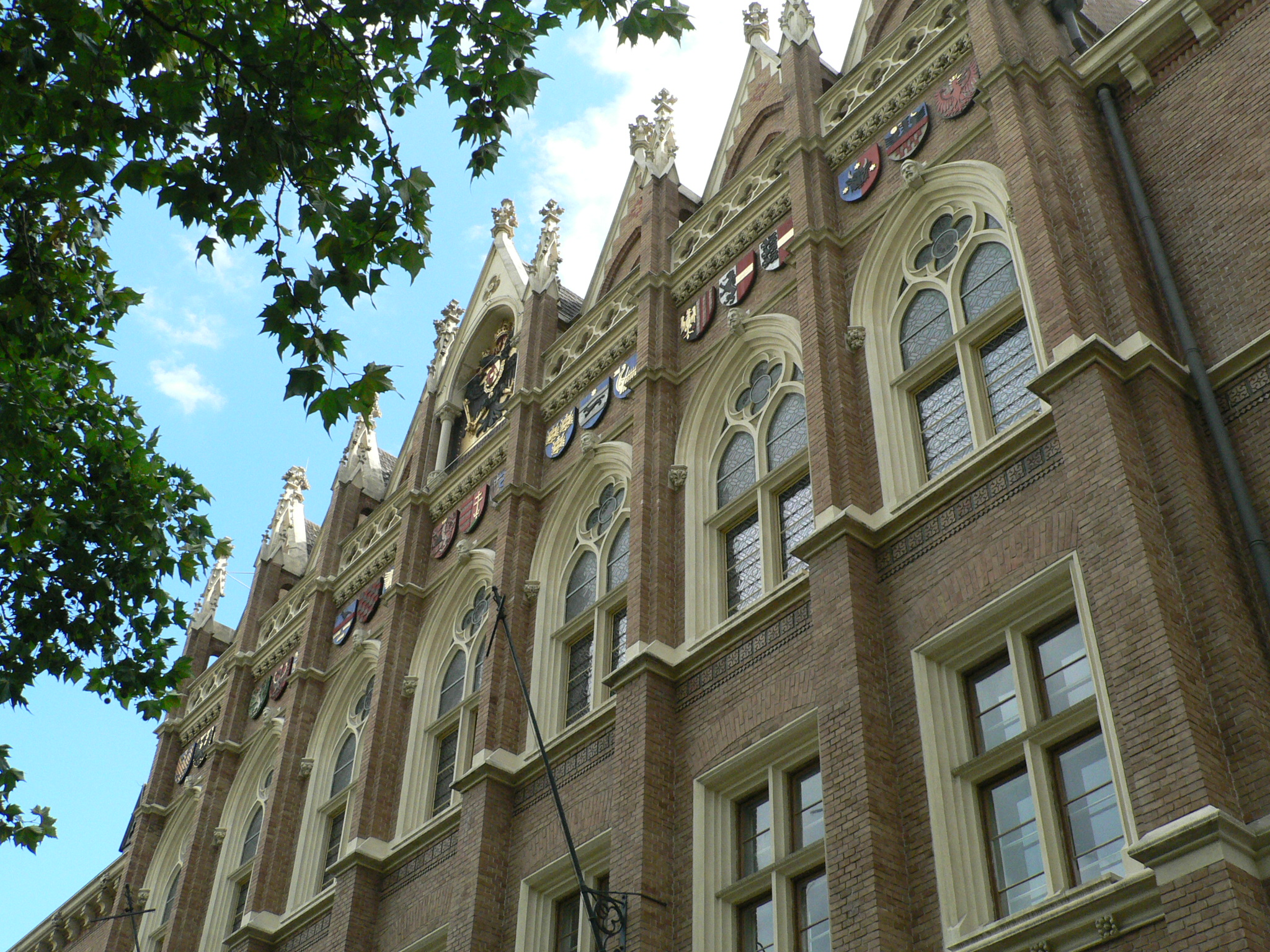- Akademisches Gymnasium (Vienna)
right|320px">Akademisches Gymnasium, Wien, BeethovenplatzFounded in 1553, the Akademisches Gymnasium is the oldest secondary school in
Vienna . The school offers a humanistic education and is known to be rather liberal compared to other traditional secondary schools in the city. Currently, there are approximately 600 pupils in 24 classes.History
16th-18th century
In the 16th century, it was the privilege of the
University of Vienna to decide about the founding of educational institutions. In March 1553, theJesuits were granted permission to found the Akademisches Gymnasiums.The main educational objectives of the exclusively Jesuit teachers was to instill knowledge and the practice of catholicism in the pupils. At the time, the Akademisches Gymnasium was located opposite the university (today the Academy of Sciences) on the premises of today's Dominican monastery. Pupils were taught in Latin.
18th-20th century
In 1773 Pope
Clement XIV dissolved the Jesuit order so that both the teaching staff and the educational objectives of the Akademisches Gymnasium changed. The new focus was on History, Mathematics, German, Literature and Geography. The school was now run by the Piarist order.It became more profane and the spirit of the Enlightenment was felt among teachers as well as pupils. New didactical and paedagogical methods were introduced, as were tuition fees.
As a result of the reform of secondary schools in 1849 the school was restructured to its present curriculum of 8 years ending with the "Matura" final exam. The humanistic aspects became more and more pronounced as education focused on languages, history, mathematics and the natural sciences. The first "Matura" exam was held in 1851.
In 1866 the school moved to its present building at Beethovenplatz in the 1st district of Vienna. It was built by
Friedrich von Schmidt , the architect who also designed the Vienna townhall, in his typical neo-gothic style.After the World Wars
The period after World War I was very difficult for the Akademisches Gymnasium and it narrowly escaped closure because of a rapid decrease in the number of pupils. This development was temporarily reversed but in 1938 the school's fate was again in peril: with the Nazis coming to power in Austria, all the Jewish pupils had to leave the school thereby reducing the school's studentship by 40 per cent. One of the most famous victims of these measures was Nobel laureate
Walter Kohn .After World War II, the Akademisches Gymnasium regained its old reputation. Known as one of the most demanding schools in Austria, it offers a general, humanistic education with a special focus on classical and modern languages preparing its pupils for further academic studies. Several of its teachers also teach at Vienna University. State-run, the school is free of charge and admission by merit. As there is no nation-wide examination even for the
Matura in Austria, the school examines its own pupils and marks reflect the school's internal standards. The Akademisches Gymnasium has been performing Greek theatre on a semi-professional level, but is also known for excellent musical performances. Lately, the school's choir has won several competitions.Prominent graduates of the Akademisches Gymnasium
*
Ludwig Adamovich , President of the Austrian Constitutional Court
*Peter Altenberg , "Kaffeehaus writer"
*Richard Beer-Hofmann , writer
*Ignaz Franz Castelli , writer
* Paul Edwards, philosopher
*Caspar Einem , former Federal minister for internal affairs and for transport
*Paul Chaim Eisenberg , Chief rabbi of Vienna
*Friedrich Heer , writer, historian
*Hugo von Hofmannsthal , playwright
*Hans Kelsen , constitutional lawyer, author of the Austrian Constitution
*Walter Kohn , physicist, Nobel laureate for chemistry in 1998
*Markus Kupferblum , theatre and opera director
*Titu Maiorescu , former Prime Minister of Roumania
*Tomáš Garrigue Masaryk , founder and president ofCzechoslovakia
*Ludwig von Mises , economist
*Richard von Mises , mathematician, early member of theVienna Circle
*Johann Nestroy , actor, playwright, poet
*Doron Rabinovici , writer
*Erwin Ringel , physician, psychologist
*Arthur Schnitzler , playwright, physician
*Erwin Schrödinger , physicist, Nobel laureate for physics in 1933
*Franz Schubert , composerLiterature
*Festschrift zum 450. Jubiläum der Schulgründung, Akademisches Gymnasium Wien
*Year booksExternal links
* [http://www.akg-wien.at/ Akademisches Gymnasium Wien]
*
Wikimedia Foundation. 2010.

